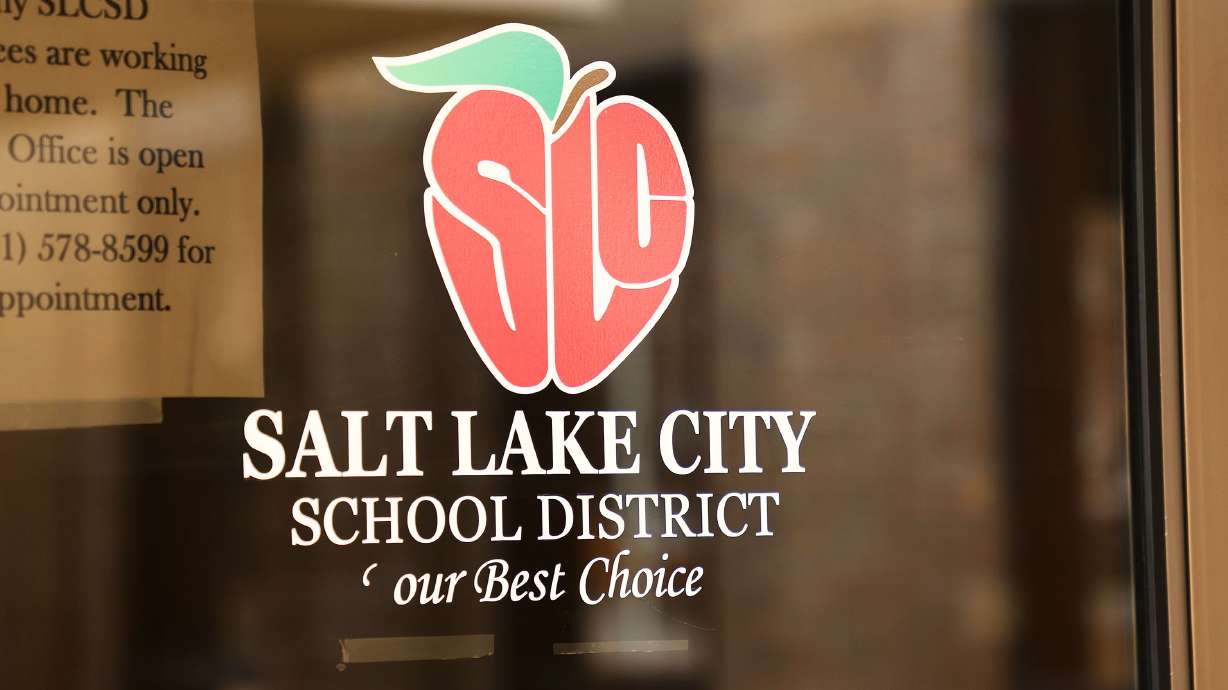Estimated read time: 5-6 minutes
This archived news story is available only for your personal, non-commercial use. Information in the story may be outdated or superseded by additional information. Reading or replaying the story in its archived form does not constitute a republication of the story.
SALT LAKE CITY — The Salt Lake City School District on Tuesday night voted to close Riley Elementary, M. Lynn Bennion Elementary, Hawthorne Elementary and Mary W. Jackson Elementary, after a yearslong process.
The Board of Education's decision was passed by 4-to-3 vote after more than 90 minutes of discussion and public comments. The four elementary schools will permanently close at the conclusion of the 2023-24 school year.
"This is about moving forward as a district. ... I am certain that this proposal is in the long-term health and well-being of our district and all of our students," Superintendent Elizabeth Grant said. "Change is hard, even good change. But change has to always be welcome and it's necessary."
The decision also includes changes to school boundaries for Backman, Edison, Emerson, Ensign, Franklin, Liberty, Mountain View, Newman, Parkview, Rose Park, Uintah, Wasatch, Washington and Whittier elementary schools.
A shrinking school district
Grant thanked the parents who were passionate enough to civilly express their opinions and who have spent time and attention on the issue.
The superintendent noted the student population has declined and the district has more schools than it needs, which is detrimental to student learning, teacher collaboration, and support of students, and is financially unsound.
Over the next 10 years, Utah will lose about 40,000 students due to the declining birthrate, families opting for other education options, and an increase in people moving from urban to suburban districts, Grant said. She added there was no preconceived idea of which schools would close before the process began, and that the district fairly evaluated all of the options.
"We have slipped at times in our communications," Grant said. But she said there is no perfect metric to use to determine school closures and that the district did the best it could.
'My 10-year-old daughter was asking why her school was closing'
Rosemary Winters, mother of a child at Hawthorne Elementary, contended during the public comment period of the meeting that the community doesn't know enough about how the schools were picked, and she asked the board members if they were confident they were making the right decision.
"Put aside the recommendation, fix the closure process and start again," she said, adding that it's more important to solve the problem correctly than quickly.
Nick Scout said the schools were not all evaluated objectively and fairly.
"The district's recommendations stand upon a subjective foundation built by a clandestine group of insiders," he said. "My 10-year-old daughter was asking why her school was closing and I didn't know what to tell her because the district has not based their decision on reliable facts."
The district began looking into the potential closures in July 2022 with the launch of a population and boundary study after enrollment numbers fell from 13,431 K-6 students in fall 2014 to 9,610 by 2022 — a nearly 29% decrease.
All 27 elementary schools in the district were included in the study, with seven elementary schools — Emerson, Hawthorne, M. Lynn Bennion, Mary W. Jackson, Newman, Riley and Wasatch — presented to the board for further consideration for closure in July.
In November, the district recommended the closures of Riley, M. Lynn Bennion, Hawthorne and Mary W. Jackson elementary schools. Officials ultimately said closing all seven schools would cause too many logistical challenges.
'No one wants to close a school'
Board President Nate Salazar said not moving forward with the closures would be a "disservice." He said it was important to consolidate enrollment to close gaps and ensure high-quality learning environments. His goal on the board has always been "to keep students at the heart and center of every action I have taken," he said.
Board member Ashley Anderson agreed and said not moving forward would bring harm to the district as funding would continue to be spread too thin over too many buildings.
Board member Bryan Jensen called funding schools that aren't full an irresponsible use of taxpayer money. He said the board engaged with and listened to all of the community's comments and the members understand the implications of the closure on the community.
"No one wants to close a school, and yes, I understand a school is more: It's a community; it's a refuge," he said.
Board member Jenny Sika said she feels in her heart that the district has had "equity and excellence to every student" as its intent in this decision. Sika, Salazar, Jensen and Anderson all voted for the recommendation.
Board member Mohammed Baayd argued it wasn't the right time for closures as students have only just readjusted to school after the pandemic.
Board Vice President Bryce Williams acknowledged the decision was not easy or light, but said he agreed with Baayd that it's not the right time to close the schools.
"Our community did not feel transparency was present. I believe there was careful effort to be transparent, but the parents didn't see it," he said. "No matter what happens tonight, we can all come together to move forward and do what's best for kids in our district."
Board member Kristi Swett agreed that the district wasn't transparent enough during the process and needs to repair the community's trust. Swett, Baayd and Williams voted against the recommendation to close schools.
The superintendent said there will be a special open enrollment process extended for families impacted by closures. "I realize the impact of this decision falls on a select community in the district, but this affects the whole community and it's the responsibility of the whole community," Grant said.
After the vote, Grant encouraged all the parents, teachers and school staff to join her in making the transition easier by welcoming families into their school communities and working together to create new school communities that can thrive.
Correction: A previous version incorrectly said the district will lose 40,000 students over the next 10 years. That total is statewide.










